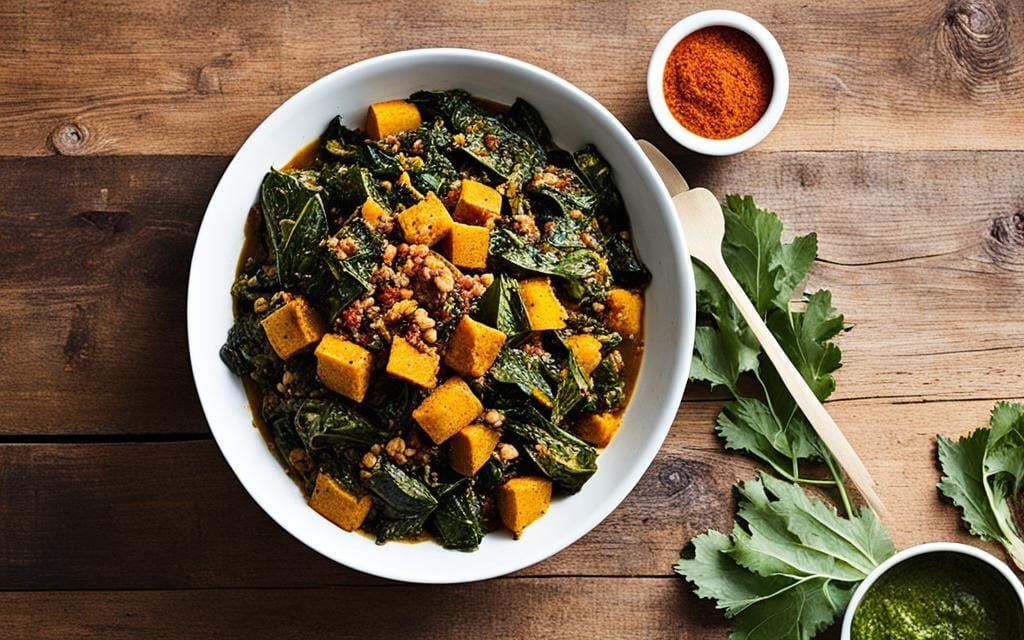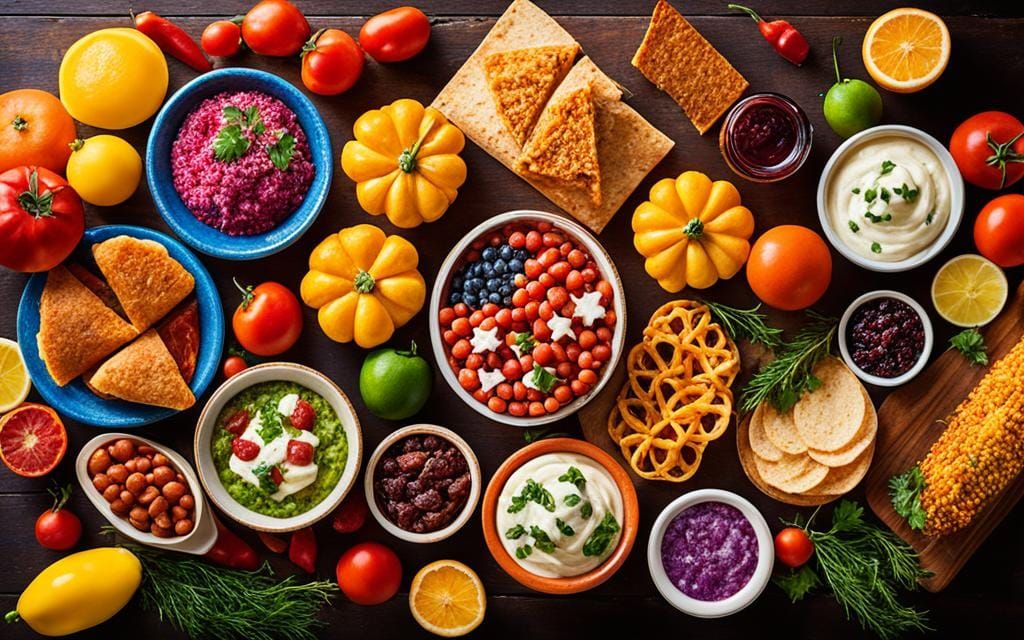American Food Culture – As an international student, you might be used to eating meals at home. But now in the USA, your meals will be in the college dining hall. There, you’ll find traditional American cuisine. This includes more than just hamburgers and fries.
American food culture is incredibly diverse. It reflects the country’s varied population. You will see a mix of ethnic foods in restaurants, supermarkets, and special stores. American cuisine draws from recipes all over the world. It changes and grows with new tech and the people who live here.
Looking for a taste of home? American cuisine has a unique way of blending different flavors and cooking styles. This creates amazing dishes that offer a bit of familiar comfort.
Table of Contents
ToggleThe Melting Pot of American Cuisine
The United States warmly greets people from worldwide. This shows in our food, from the ingredients to the holidays that we celebrate. As migrants bring their food and cooking traditions, they blend into a rich American mix.
Blending of Cultures and Ingredients
Our food paints a picture of who we are and what we value. Family meals share the story of our past, influenced by our history and climatic conditions. Through the passing of recipes, America has become a place full of diverse dishes.
It’s common to see foods from all over, like Chinese, Mexican, or Italian, in any American city. This mix showcases how different cultures have come together in the U.S.
Adapting to Local Tastes and Regional Produce
International cuisines offered in the U.S. might taste a bit different. This is because they’ve adapted to what’s available here, blending with local preferences.
American cooking takes the best from different traditions to craft its unique dishes. This culinary uniqueness comes from the fusion of many influences. It makes American food culture exciting and full of variety.
Indigenous Roots: Native American Influences
Long before the colonizers came, Native Americans had rich food cultures. Corn originally comes from Central America. It arrived in North America through Native American agriculture around 8000 BC. Then, they taught the Europeans farming, processing, and cooking techniques for corn. This knowledge was crucial. Cornbread, a beloved food, shows the lasting impact of this exchange, especially in the South.
Corn: A Staple Crop of the Americas
Corn was vital for many Native American groups. It heavily influenced pre-colonial food in the Americas. These societies were creative in farming, processing, and cooking corn. This created a deep culinary legacy. It shaped future American food culture.
Traditional Cooking Methods and Ingredients
It’s hard to find native recipes in the US today. Only 2% of Americans are indigenous. Also, much of these cooking traditions were shared through stories. So, they are not well-documented. But, the impact of Native cooking on American food is huge. Key ingredients like corn, squash, and beans, as well as methods like roasting and drying, are still used widely.
Colonial Beginnings: English and Dutch Contributions
The English were among the first Europeans to settle in the United States. They greatly influenced early colonial food culture. Millions from England arrived in the country from the early 1600s to the mid-1800s. They brought many culinary traditions and techniques.
In their new land, English settlers were far from familiar cooking ingredients and methods. Despite this, they were eager to experiment and innovate. They discovered new foods, leading to the fusion of old and new tastes in their dishes.
The Tradition of Tea and Coffee
The English’s love for tea has a strong place in American food history. Dutch traders explored the American mainland in the 1600s. They were the first to bring coffee beans into the United States.
After this, English colonists got into the coffee trading business. They started by bringing these beans to New York City. From there, they spread this new beverage to other American colonies. This marked the beginning of coffee’s essential place in American culture.
Early Culinary Experimentations
Early settlers not only found new food ingredients but also shared many dishes from their homelands. They introduced a wide variety of cooking techniques to the American diet. This exchange of culinary knowledge and experimentation has shaped what we know as American food culture today.
Italian Immigration: A Love for Fresh Produce
In the late 1800s, many Italians came to the United States. They planned to work in farms. Italian immigrants loved vegetables and fresh produce. They preferred to eat healthily and organically. This lifestyle choice became popular in America too.
Introduction of Tomatoes and Mediterranean Flavors
Italians introduced new flavors to American food. For instance, they brought tomatoes, a staple from ancient Rome. This gift impacted American cooking deeply. Garlic, mushrooms, olives, and peppers also became popular in America. These ingredients added a special Mediterranean touch to American meals.
African Diaspora: Enriching Southern Cuisine
The African people have made a huge impact on American food. This is especially true in the South. Before the Civil War, many African slaves cooked in homes and on plantations. They brought their West African recipes and ingredients, which helped shape the South’s food. Dishes like gumbo, jambalaya, and soul food highlight this lasting influence.
Gumbo, Jambalaya, and Soul Food
Gumbo is a stew that comes from an African word. It’s now a favorite in the American South. Jambalaya, on the other hand, is a rice dish that mixes African, French, and Spanish cooking. These dishes, along with soul food, are loved in the South and beyond for their deep flavors.
Okra and Greens: Staple Ingredients
Okra is a vital ingredient in many Southern dishes, thanks to enslaved Africans. Leafy greens like collard, mustard, and turnip greens are also key. These foods are nutrient-rich and often cooked with smoked meats. They’re a big part of what makes Southern food so special.

Jewish Influences: Bagels and Deli Traditions
In the mid-1800s, many American Jews came from Europe. They brought their cooking traditions. This helped shape American food culture. By the early 1900s, Jews from Poland arrived in large numbers. They brought bagels with them.
This led to the widespread love for bagels today.
New York Delis and Iconic Dishes
Visiting a deli in New York City is a must. It offers famous Jewish foods. Katz’s Delicatessen on the Lower East Side is over a century old. It is famous for its pastrami sandwiches and matzo ball soup.
asian food culture
In the mid-1800s, Chinese immigrants started coming to the west coast. They brought in many new asian ingredients, textures, and recipes. These were things the United States hadn’t seen before.
Asian immigrants also introduced new cooking methods. They showed Americans how to can, ferment, and steam vegetables. This changed the American food scene forever.
Stir-Fry and Exotic Ingredients
The stir-fry became a common dish thanks to these immigrants. Over the last 175 years, Asian food from various countries has influenced America. This includes Thailand, Korea, Japan, and the Philippines.
Preservation and Cooking Techniques
Asian immigrants brought unique preservation and cooking methods. These ways of canning, fermenting, and steaming have made a lasting impact. They’ve broadened American food culture and added diverse flavors.
Regional Specialties: From Coast to Coast
Traveling across the U.S. shows how each region has its own special food. This mix comes from sharing cultures and new cooking ideas. The northeast has seafood delights while the southwest enjoys Cajun and Tex-Mex heat. Every place in America is unique, offering a special taste of its history.
Northeastern Seafood and Chowders
The northeast cheers the Atlantic’s seafood, from lobster rolls to clam chowder. Cities like Boston and Maine’s coastal towns serve dishes full of the sea’s flavors. Fishing is a big deal in this region, thanks to communities that pass fishing down through families. This means fresh fish and seafood for everyone to enjoy.
Southwestern Tex-Mex and Cajun Flavors
Head southwest for fusion meals at Tex-Mex places. Here, Mexican and American food meet in dishes like fajitas and enchiladas. This mix tells a story of cultures blending over time. In Louisiana, Cajun and Creole tastes lead. Dishes like gumbo and jambalaya shine, highlighting this area’s French, African, and Native American food ways.
Fast Food and Casual Dining: A Unique American Experience
Fast food is a favorite in American food culture. In 2018, the Center for Disease Control and Prevention found that over a third of adults eat it daily. Americans often pick favorites, like preferring McDonald’s to Burger King or Chipotle to Taco Bell.
America’s food culture is diverse, with places for different tastes and preferences. It used to be just about fast food and sit-down restaurants. Now, “fast casual” dining has become a big hit. Fast casual is in-between fast food and full restaurants.
The Rise of Fast Food Culture
Fast food grew a lot in America over the years, becoming a go-to for quick and cheap meals. Fast food chains are everywhere now, not just in the US. They’ve become a big part of global food culture.
Fast Casual: A Modern Twist
Recently, fast casual places have become very popular. They offer better quality food that’s made when you order it. Chains like Chipotle and Panera Bread are part of this movement, changing how we view fast and easy dining.
Conclusion
American food culture has grown over the years to be a global favorite. It pulls from many different cultures. This makes it lively, varied, and always evolving because of immigrants, pioneers, and changes in the U.S.
It’s a blend of Native American influences and those from European, Asian, and African immigrants. The food we eat now shows the deep history and the mix of different cultures living in America.
When we look at the culinary traditions in America, we see a beautiful mix. This includes bold flavors, unique ways of cooking, and ingredients from around the globe. From well-known local dishes to new, global twists, American food tells a story of adaptability and strong roots.
The tale of American food culture is full of change and creativity. From Native American staples to the flavors of European, Asian, and African contributions, it keeps growing. Enjoying our meals, we honor the past and the diversity that makes our food special, showing the variety found in the U.S.
FAQ
What is American cuisine and how has it evolved?
American cuisine is a mix of many styles, showing the nation’s story. This food culture includes food from Native Americans and those who came to America later. European, Asian, and African influences can all be seen.
How have different immigrant groups shaped American food culture?
People from Europe, Asia, and Africa have greatly shaped what Americans eat. They brought new foods, recipes, and dishes. These are now essential parts of American food.
What are some of the iconic regional cuisines in the United States?
The U.S. has many unique food styles in different places. You’ll find seafood in the Northeast, Tex-Mex in the Southwest, and barbecue in the South. The Pacific Northwest loves its fresh produce.
How has fast food culture impacted American dining habits?
Fast food is a big part of how Americans eat. Many enjoy it often. But, more people are also looking for healthier and unique food options. This change is seen in the growing popularity of fast-casual places.
What role has technology and globalization played in the development of American cuisine?
Technology and global links have mixed different food traditions. This has made it easier for people to try various foods. American cuisine is always changing and taking in new flavors and styles.









